- Home
- insider picks
- news
- I toured LGBTQ-friendly neighborhoods in 3 cities during Pride Month and found they all honor LGBTQ people in unique ways
I toured LGBTQ-friendly neighborhoods in 3 cities during Pride Month and found they all honor LGBTQ people in unique ways
Frank Olito

- I toured the West Village in New York, Boystown in Chicago, and Ferndale near Detroit to see how they honor Pride.
- There's a virtual reality tour at the Stonewall Inn in New York, while Boystown has the Legacy Walk.
- The neighborhoods had one thing in common: their commitment to honoring the past to ensure safe places for LGBTQ people in the future.
Editor's note: This article was originally published in 2021. It has been included in Insider's 2022 Pride series, "We/Us/Ours."
Most cities in the US have a neighborhood where there is a concentration of LGBTQ-friendly bars, restaurants, clubs, and stores.
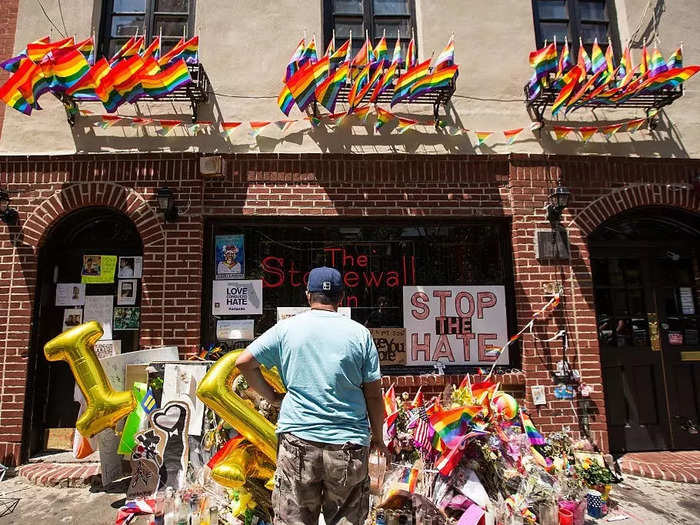
On a recent trip to the Midwest, I toured Boystown in Chicago and Ferndale in Detroit so I could compare those LGBTQ-friendly neighborhoods to the West Village in my hometown of New York City.
I wanted to see how they honored Pride Month, which celebrates LGBTQ people each June, and I found these neighborhoods go about it differently.
My first stop was the West Village in New York City, which is where the Gay Rights Movement began.
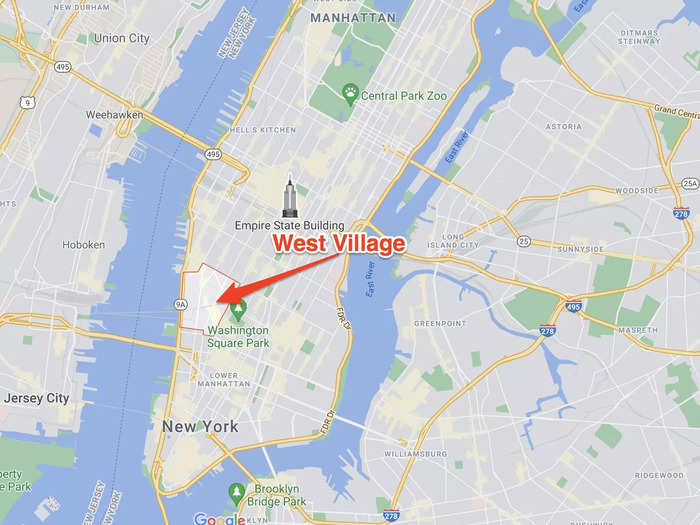
As a born and bred New Yorker who identifies as gay, I'm no stranger to the west side of Manhattan, which has a few LGBTQ neighborhoods like the West Village, Chelsea, and Hell's Kitchen.
But I decided to visit the West Village this June because that's where the Stonewall Inn is located.
The Stonewall Inn is currently covered in scaffolding but it still operates as a bar and landmark today.
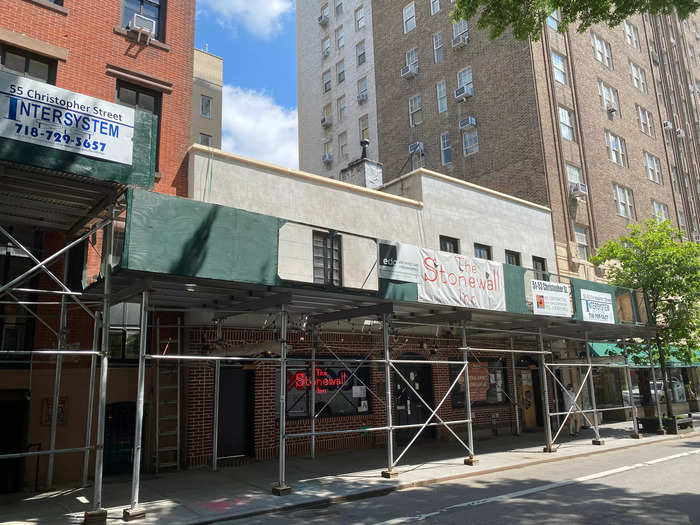
In 1969, Black and Latinx transgender leaders at the Stonewall fought back against police when the LGBTQ bar was raided during a time when homosexual acts were illegal in the city. The riots lasted days, kicking off the Gay Rights Movement.
Today, the bar still stands in the West Village as a testament to those who started the fight for LGBTQ rights.
Just outside the Stonewall Inn, there is a small park, which has been designated as a National Monument.
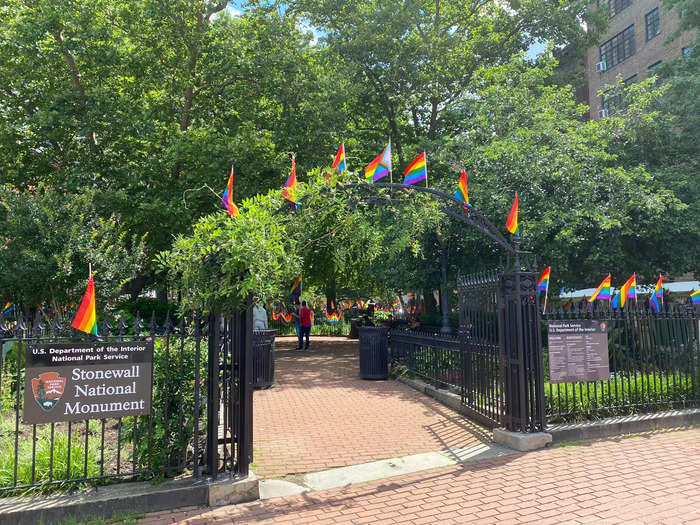
During Pride Month in 2016, President Barack Obama designated the park at the Stonewall Inn a new national monument.
"Stonewall will be our first national monument to tell the story of the struggle for LGBT rights," he said at the time. "I believe our national parks should reflect the full story of our country, the richness and diversity and uniquely American spirit that has always defined us. That we are stronger together. That out of many, we are one."
When I visited the park during Pride Month this year, I found rainbow flags lining the fencing. Also, there were pictures on the fence, showcasing important moments in the Gay Rights Movement.
This year, the national monument has a great virtual feature that walks you through the history of the Stonewall Inn.

I scanned a QR code that I found on a sign in the park. The code took me to a website that opened up my camera and created a virtual reality tour. As I followed the rainbow path on my phone, I found virtual markers that explained the significance of the location.
Although it wasn't a perfect VR experience, I thought it was an innovative way to teach the public about an important moment in history.
As I walked away from the Stonewall Inn, I saw Pride flags all over the neighborhood.
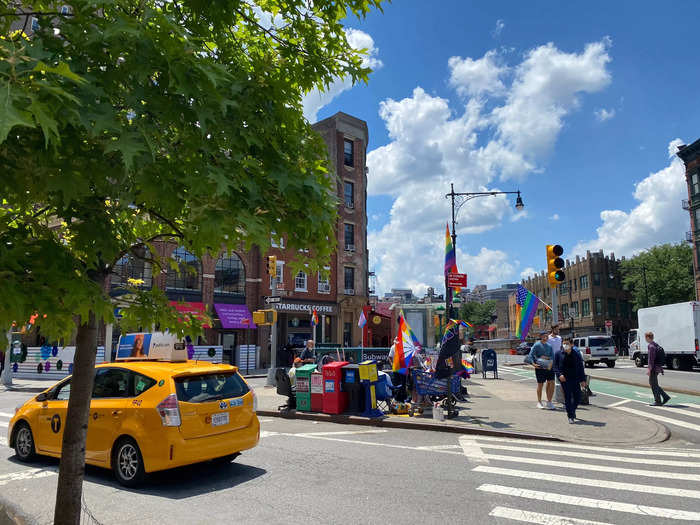
One man was selling rainbow flags outside a subway station that was also covered in Pride merch.
While walking through the West Village and down the famous Christopher Street — where the Stonewall Inn is located — I passed legendary LGBTQ bars like Cubbyhole.
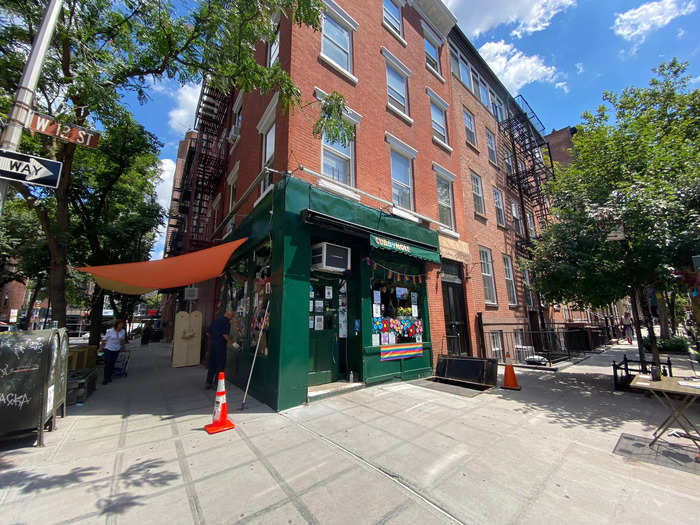
Cubbyhole is a lesbian bar that dates back to the '80s. Its eclectic decor has made it a staple in the West Village and beyond.
I ended my West Village tour at the Christopher Street Pier, which is another LGBTQ-friendly spot in the neighborhood.
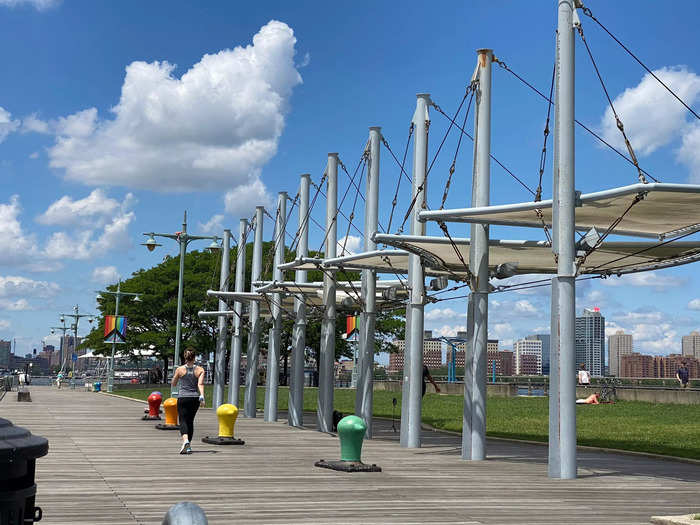
In the '70s, Christopher Street Pier was a place many LGBTQ people hung out to sunbathe naked and enjoy time away from the onlookers of the city. Today, the pier has been renovated and remains an LGBTQ spot. Although it was largely empty when I went there, it's typically filled with people on the weekends.
While walking down the pier, which was decorated with Pride flags, I realized most of the sites in New York City's LGBTQ neighborhood date back to the start of the Gay Rights Movement. From the Stonewall Inn to Cubbyhole to Christopher Street Pier, these places have historic importance but still exist as havens in the large city.
Most strikingly, these landmarks in New York started as secretive locations where LGBTQ people could just be themselves, and now, they are public places where LGBTQ people are celebrated openly.
On the other hand, Chicago's LGBTQ-friendly neighborhood, Boystown, is a bit more subdued.

In the '60s, LGBTQ people were scattered all over Chicago but mainly centralized in downtown. As rents increased, they were pushed further north. After the Stonewall Riots in New York, LGBTQ people in Chicago started opening businesses and moving to inexpensive Halsted Street. In the '90s, the neighborhood formally became recognized as Boystown.
While walking through Boystown, I saw Pride flags on storefronts, in windows, and on lampposts.
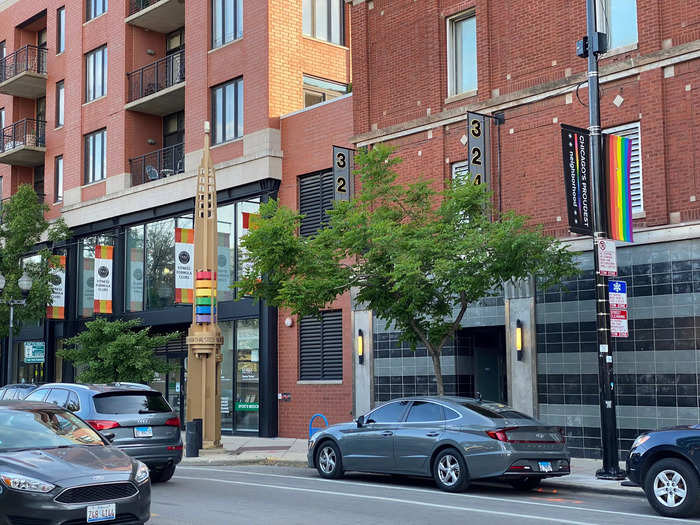
Much like New York's West Village, Boystown also showed pride with rainbow flags. One read, "Chicago's proudest neighborhood."
The neighborhood and bars I passed were mostly quiet, so the rainbow crosswalk really stood out.
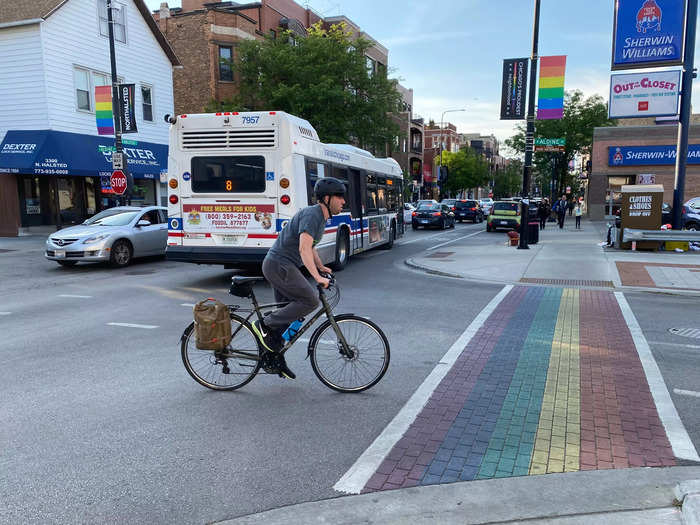
In New York, I haven't seen an intersection painted in the colors of the rainbow, so I thought it was a really nice touch for the neighborhood.
Another crosswalk was painted with the colors of the transgender flag.
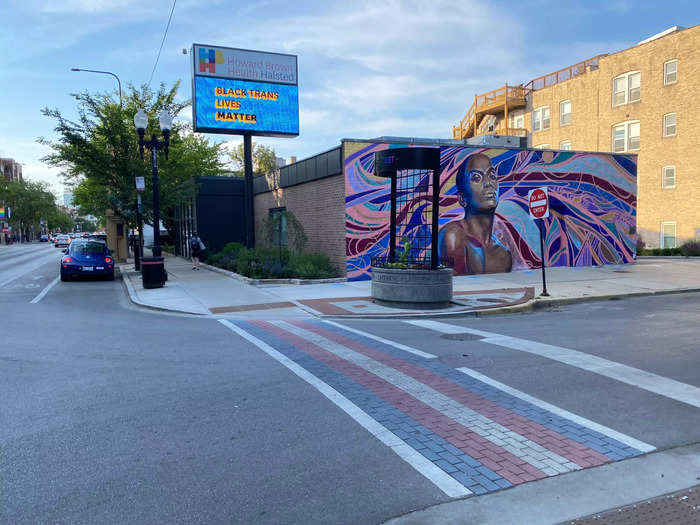
A sign at Howard Brown Health Halsted, a medical center that focuses on LGBTQ health, read "Black Trans Lives Matter."
Most interestingly, Boystown has permanent monuments known as the Legacy Walk.
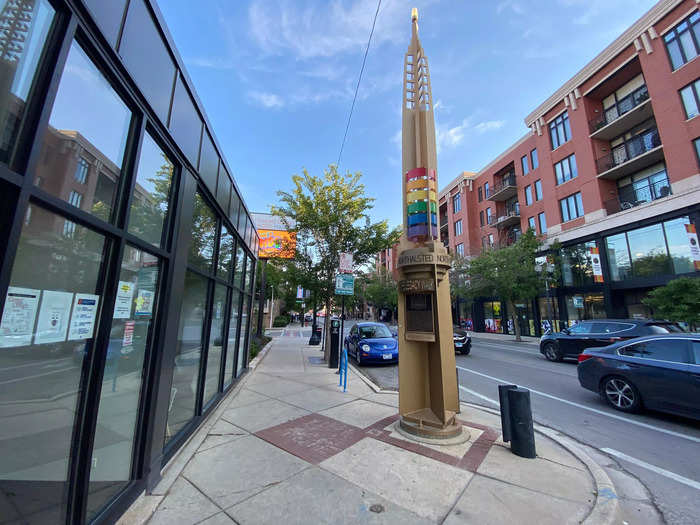
There are 20 pylons that tower 25 feet high along Halsted Street. The top half of each pylon is decorated in rainbow colors and the bottom half has plaques.
When I got closer to the pylons along the Legacy Walk, I noticed each side honored an LGBTQ leader.
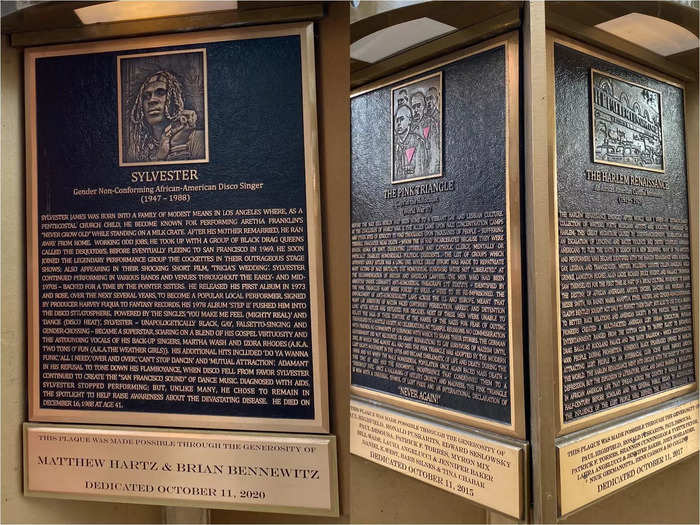
The Legacy Walk pylons feature short biographies for famous LGBTQ figures like Audre Lorde, Oscar Wilde, James Baldwin, Bayard Rustin, Freddie Mercury, and Alan Turing.
One plaque focuses on historic symbols, like the Pink Triangle, an emblem that was placed on LGBTQ people in concentration camps during the Holocaust to further humiliate them. In the '70s, the Pink Triangle was reclaimed as a symbol of pride for the community.
Another plaque along the Legacy Walk honors the Harlem Renaissance, which took place after World War I when people left the segregated South and fled to Harlem in Manhattan. As a result, the new community had a creative outpouring of writing, music, and art. Many of the residents in Harlem at that time identified as LGBTQ, like poet Langston Hughes and writer Alain Locke.
While New York honored LGBTQ history using virtual reality, Chicago's Boystown honored the history of LGBTQ people with these beautiful, educational monuments.
My third stop on my LGBTQ-friendly tour was Ferndale, Michigan, which sits just outside of metro Detroit.

In the mid-1900s, LGBTQ people were centered in downtown Detroit, but they eventually moved to Palmer Park. When crime rose in that area, the LGBTQ neighborhood moved 12 miles outside the city to Ferndale.
As soon as I arrived in Ferndale, I saw a rainbow crosswalk similar to the one in Chicago.
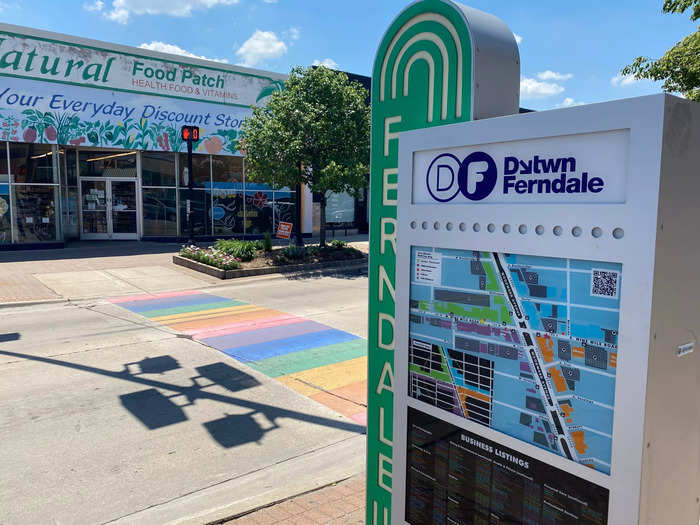
The sign next to the crosswalk showcased all the stores, restaurants, and bars located on the main strip of downtown Ferndale.
Since Ferndale is known for its LGBTQ-owned shops, I first went into the Rust Belt Market.
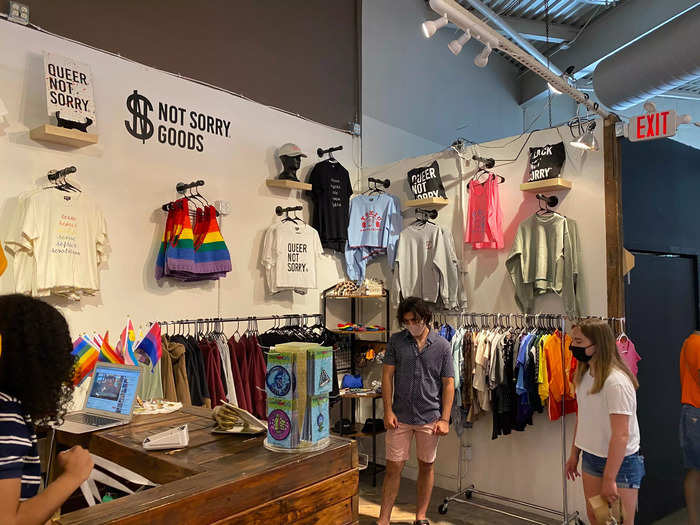
The market was filled with little shops that sold a variety of products from plants to clothing. One shop focused on rainbow-branded products for Pride Month.
When I left the market, I heard music bumping in the distance. I followed it across the street to Como's.
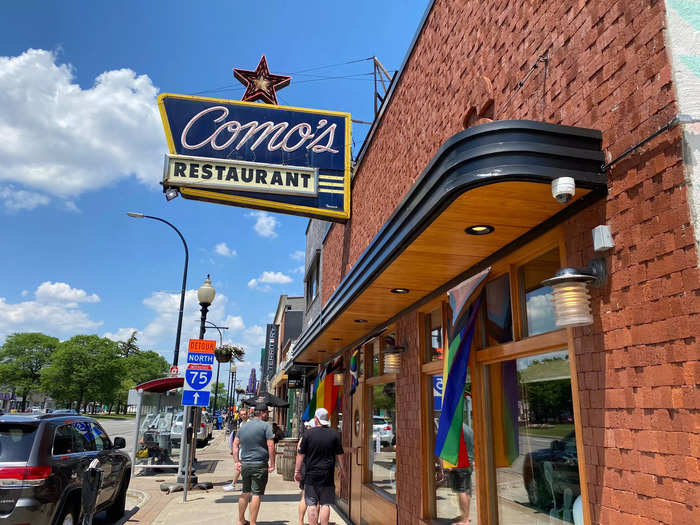
Como's dates back to 1961 and stands in the middle of the neighborhood. When I peeked inside, I saw a completely packed space filled with LGBTQ people enjoying a live drag show. It felt great to see people being authentically themselves in a safe environment.
I decided to keep walking through Ferndale and spotted Pride flags all over.
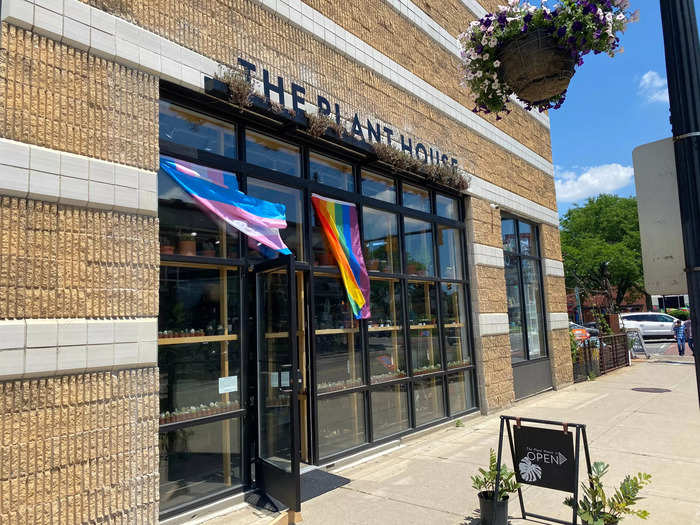
The rainbow flags are a common theme throughout all the neighborhoods I visited.
Once I walked away from the main strip of shops and restaurants, I was surprised to find a quaint, suburban neighborhood.
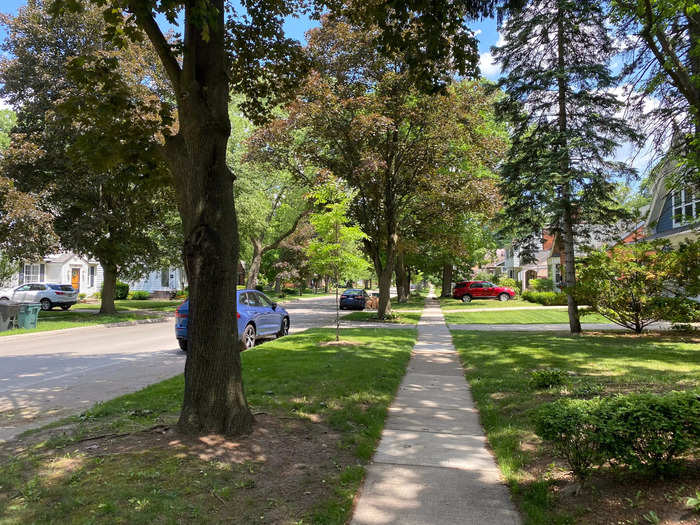
While walking down these side streets, I thought about all the LGBTQ people and families living in the area, as Ferndale has one of the country's highest rates of same-sex households.
Out of all the places I visited, Ferndale reminded me that identifying as LGBTQ isn't just about rainbow flags and bars. It's also about finding a small community where you can feel safe.
After touring LGBTQ-friendly neighborhoods in New York, Chicago, and Detroit, I realized there is no one way to celebrate Pride.
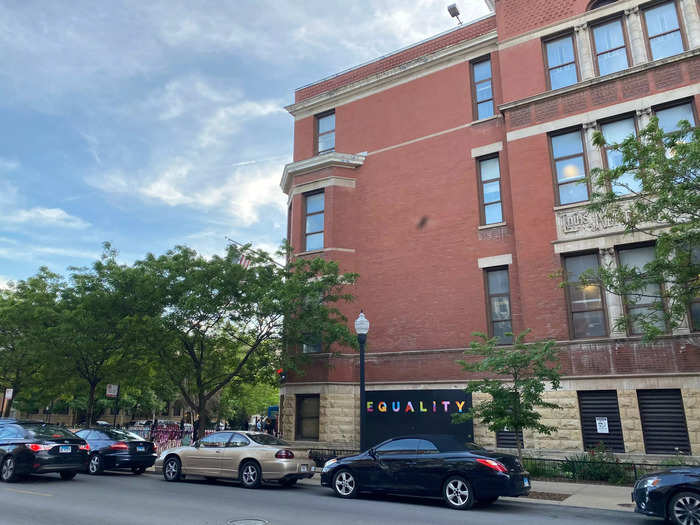
Although I will always have a soft spot for New York, there isn't one LGBTQ neighborhood that is doing it better. They are all different in their own way — just like the people who identify as LGBTQ. Whether it's through a virtual tour of a historic monument, statues that stand permanently to honor the past, or Pride flags that wave in the wind, each of the cities has a different way to celebrate Pride Month.
But they all have one thing in common: their commitment to honoring the past to ensure safe places for LGBTQ people in the future.
READ MORE ARTICLES ON
Popular Right Now
Popular Keywords
Advertisement